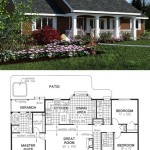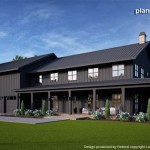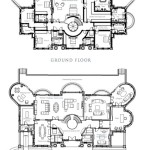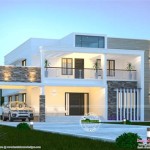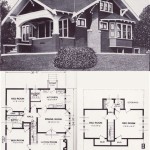Log home house plans designs are detailed blueprints and specifications that serve as the foundation for constructing a log home. These plans encompass the architectural layout, structural engineering, and interior design concepts of a log home. They provide a comprehensive roadmap for builders to follow, ensuring the creation of a durable, energy-efficient, and aesthetically pleasing living space.
For instance, a standard log home house plan might include floor plans for multiple levels, exterior elevations showcasing the log facade, and cross-sectional drawings detailing the construction methods. By adhering to these plans, builders can construct log homes that meet the specific needs and preferences of homeowners, ranging from cozy cabins to spacious family dwellings.
In the following sections, we will delve deeper into the elements of log home house plans designs, exploring the different types of log homes, the design considerations involved, and the benefits of utilizing professional design services for your log home project.
Here are nine important points about log home house plans designs:
- Floor plan layout
- Exterior elevations
- Cross-sectional drawings
- Log profile and size
- Roof design and pitch
- Window and door placement
- Energy efficiency features
- Structural engineering
- Interior design concepts
These elements are crucial for ensuring the structural integrity, functionality, and aesthetic appeal of your log home.
Floor plan layout
The floor plan layout of a log home is a crucial aspect of the design process, as it determines the overall functionality and livability of the space. Unlike traditional stick-built homes, log homes have unique structural requirements that influence the layout and flow of the interior.
Log homes are typically constructed with load-bearing log walls, which means that the logs themselves provide the structural support for the building. This can limit the placement of windows and doors, as well as the size and shape of rooms. However, experienced log home designers are skilled at working within these constraints to create floor plans that are both practical and aesthetically pleasing.
One of the key considerations in log home floor plan design is the placement of the main living areas. Great rooms, kitchens, and dining areas are often located on the main floor, where they can take advantage of natural light and views. Bedrooms and bathrooms are typically situated on the upper floors, providing privacy and separation from the main living areas.
Another important factor to consider is the flow of traffic through the home. The floor plan should allow for easy movement between rooms, without creating bottlenecks or awkward transitions. This is especially important in smaller log homes, where space is at a premium.
By carefully considering all of these factors, log home designers can create floor plans that are tailored to the specific needs and preferences of homeowners, ensuring that their log home is a comfortable and enjoyable living space.
Exterior elevations
Exterior elevations are detailed drawings that show the exterior appearance of a log home from different sides. These drawings are essential for visualizing the overall design and style of the home, as well as for ensuring that the home will be structurally sound and energy efficient.
When creating exterior elevations, log home designers must consider a variety of factors, including the following:
- The size and shape of the home
- The type of logs being used
- The roof design and pitch
- The placement of windows and doors
- The overall aesthetic appeal of the home
One of the most important aspects of exterior elevation design is the choice of logs. Logs can be milled in a variety of shapes and sizes, and the type of log used will have a significant impact on the overall appearance of the home. For example, round logs create a more rustic look, while square or rectangular logs create a more modern look.
The roof design and pitch is also an important consideration. A steeply pitched roof will shed water and snow more effectively, but it will also create a more imposing appearance. A gently pitched roof will create a more relaxed and inviting look, but it may not be as effective at shedding water and snow.
The placement of windows and doors is another important factor to consider. Windows and doors should be placed to maximize natural light and views, while also providing privacy and security. The overall aesthetic appeal of the home is also important. The exterior elevations should be designed to complement the surrounding landscape and to reflect the personal style of the homeowners.
By carefully considering all of these factors, log home designers can create exterior elevations that are both beautiful and functional.
Cross-sectional drawings
Cross-sectional drawings are detailed drawings that show the interior of a log home from top to bottom. These drawings are essential for understanding how the home is put together and for ensuring that it is structurally sound and energy efficient.
Cross-sectional drawings typically show the following information:
- The thickness of the logs
- The type of joinery used to connect the logs
- The location of the windows and doors
- The location of the electrical and plumbing systems
- The location of the insulation
Cross-sectional drawings are used by builders to ensure that the home is constructed according to the plans. They are also used by homeowners to visualize the interior of the home and to make informed decisions about the design and construction process.
One of the most important aspects of cross-sectional drawings is the depiction of the log joinery. Log joinery is the method used to connect the logs together at the corners of the home. There are a variety of different log joinery methods, each with its own advantages and disadvantages. The type of log joinery used will have a significant impact on the structural integrity and energy efficiency of the home.
Another important aspect of cross-sectional drawings is the depiction of the insulation. Insulation is essential for keeping a log home warm in the winter and cool in the summer. The type and thickness of insulation used will depend on the climate in which the home is located.
By carefully considering all of these factors, log home designers can create cross-sectional drawings that ensure that the home is structurally sound, energy efficient, and visually appealing.
Log profile and size
The log profile and size are two of the most important factors to consider when designing a log home. The log profile refers to the shape of the logs used to construct the home, while the log size refers to the diameter of the logs.
There are a variety of different log profiles available, each with its own advantages and disadvantages. Some of the most common log profiles include:
- Round logs: Round logs are the most traditional type of log used in log home construction. They create a rustic and charming look, and they are relatively easy to work with.
- Square logs: Square logs create a more modern and contemporary look. They are easier to stack and align than round logs, and they can be used to create a variety of architectural styles.
- D-logs: D-logs are a hybrid of round logs and square logs. They have a rounded exterior and a flat interior, which makes them easier to stack and insulate than round logs.
- Half-logs: Half-logs are logs that have been split in half. They are often used to create a more rustic look, and they can be used to create a variety of architectural styles.
The size of the logs used will also have a significant impact on the appearance and feel of the home. Smaller logs create a more delicate and refined look, while larger logs create a more rustic and imposing look. The size of the logs will also affect the structural integrity and energy efficiency of the home.
When choosing the log profile and size, it is important to consider the overall design of the home, as well as the climate in which the home will be located. By carefully considering all of these factors, log home designers can create homes that are both beautiful and functional.
Roof design and pitch
The roof design and pitch are two of the most important factors to consider when designing a log home. The roof design will affect the overall appearance of the home, while the roof pitch will affect the home’s structural integrity and energy efficiency.
There are a variety of different roof designs available for log homes, including gable roofs, hip roofs, and shed roofs. Gable roofs are the most common type of roof design for log homes, and they create a classic and traditional look. Hip roofs are a good choice for homes in windy areas, as they are more aerodynamic than gable roofs. Shed roofs are a good choice for homes with a modern or contemporary design.
The roof pitch is the angle of the roof, and it is measured in degrees. A steeper roof pitch will shed water and snow more effectively, but it will also create a more imposing appearance. A gentler roof pitch will create a more relaxed and inviting look, but it may not be as effective at shedding water and snow.
When choosing the roof design and pitch, it is important to consider the overall design of the home, as well as the climate in which the home will be located. By carefully considering all of these factors, log home designers can create homes that are both beautiful and functional.
- Gable roofs are the most common type of roof design for log homes. They are characterized by two sloping sides that meet at a ridge in the center of the roof. Gable roofs are relatively easy to construct, and they can be used to create a variety of different architectural styles.
- Hip roofs are characterized by four sloping sides that meet at a point at the top of the roof. Hip roofs are more aerodynamic than gable roofs, which makes them a good choice for homes in windy areas. Hip roofs can also be used to create a variety of different architectural styles.
- Shed roofs are characterized by a single sloping side. Shed roofs are the simplest type of roof to construct, and they are often used on small homes or outbuildings. Shed roofs can also be used to create a modern or contemporary look.
- The roof pitch is the angle of the roof, and it is measured in degrees. A steeper roof pitch will shed water and snow more effectively, but it will also create a more imposing appearance. A gentler roof pitch will create a more relaxed and inviting look, but it may not be as effective at shedding water and snow.
Window and door placement
Window and door placement is an important consideration in log home house plans designs. The placement of windows and doors can affect the home’s energy efficiency, natural lighting, and overall aesthetic appeal.
When placing windows and doors, it is important to consider the following factors:
- Energy efficiency: Windows and doors are a major source of heat loss in a home. By carefully placing windows and doors, it is possible to minimize heat loss and improve the home’s energy efficiency.
- Natural lighting: Windows are a great way to bring natural light into a home. By placing windows in strategic locations, it is possible to maximize natural lighting and reduce the need for artificial lighting.
- Overall aesthetic appeal: The placement of windows and doors can also affect the home’s overall aesthetic appeal. By carefully placing windows and doors, it is possible to create a home that is both beautiful and functional.
Here are some additional tips for window and door placement:
- Place windows on the south side of the home. This will allow the home to take advantage of passive solar heating in the winter.
- Use energy-efficient windows and doors. This will help to reduce heat loss and improve the home’s energy efficiency.
- Consider the size and shape of windows and doors. The size and shape of windows and doors can affect the home’s overall aesthetic appeal.
- Think about the placement of furniture and other objects when placing windows and doors. This will help to ensure that the home is both functional and aesthetically pleasing.
By carefully considering all of these factors, it is possible to create a log home house plan design that is both beautiful and functional.
Energy efficiency features
Log homes are naturally energy efficient due to the insulating properties of wood. However, there are a number of additional energy efficiency features that can be incorporated into log home house plans designs to further reduce energy consumption and costs.
- Insulation
Insulation is one of the most important energy efficiency features that can be incorporated into a log home. Insulation helps to keep the home warm in the winter and cool in the summer by reducing heat transfer. Insulation can be installed in the walls, roof, and floor of the home. The type and thickness of insulation used will depend on the climate in which the home is located.
- Windows and doors
Windows and doors are another major source of heat loss in a home. By using energy-efficient windows and doors, it is possible to reduce heat loss and improve the home’s energy efficiency. Energy-efficient windows and doors are typically made with double or triple glazing, and they may also have a low-emissivity (low-e) coating. Low-e coatings help to reflect heat back into the home in the winter and keep heat out in the summer.
- Air sealing
Air sealing is the process of sealing any cracks or gaps in the home’s envelope. Air sealing helps to prevent warm air from escaping in the winter and cool air from escaping in the summer. Air sealing can be done by using caulk, weatherstripping, and spray foam insulation.
- Appliances
The appliances in a home can also affect the home’s energy efficiency. By using energy-efficient appliances, it is possible to reduce energy consumption and costs. Energy-efficient appliances are typically labeled with the Energy Star logo.
By incorporating these energy efficiency features into log home house plans designs, it is possible to create homes that are both beautiful and energy efficient.
Structural engineering
Structural engineering is the branch of engineering that deals with the analysis and design of structures. In the context of log home house plans designs, structural engineering ensures that the home is able to withstand the various loads that it will be subjected to, such as gravity, wind, and snow.
One of the most important aspects of structural engineering for log homes is the design of the log walls. Log walls are typically load-bearing, meaning that they support the weight of the roof and the floors. The logs must be properly sized and joined together in order to ensure that the walls are strong enough to withstand the loads that they will be subjected to.
Another important aspect of structural engineering for log homes is the design of the roof. The roof must be able to withstand the weight of the snow and wind that it will be subjected to. The roof must also be properly attached to the walls in order to ensure that the home is stable.
In addition to the log walls and roof, structural engineering for log homes also includes the design of the floors, windows, and doors. All of the components of a log home must be properly designed and constructed in order to ensure that the home is safe and habitable.
Structural engineering is a complex and important part of log home house plans designs. By carefully considering all of the factors involved, structural engineers can design homes that are both beautiful and safe.
Interior design concepts
The interior design of a log home is an important part of creating a warm and inviting space. There are a number of different interior design concepts that can be used to create a log home that is both beautiful and functional.
- Rustic style
Rustic style is a popular choice for log homes. This style embraces the natural beauty of the wood and uses natural materials such as stone, leather, and fur. Rustic interiors often feature exposed beams, stone fireplaces, and wood floors.
- Modern style
Modern style is another popular choice for log homes. This style uses clean lines and simple shapes to create a sophisticated and contemporary look. Modern interiors often feature open floor plans, large windows, and sleek furniture.
- Traditional style
Traditional style is a classic choice for log homes. This style uses traditional furniture and dcor to create a warm and inviting space. Traditional interiors often feature cozy fireplaces, comfortable seating, and elegant lighting.
- Eclectic style
Eclectic style is a great way to create a unique and personal log home. This style combines elements from different design styles to create a space that is both stylish and functional. Eclectic interiors often feature a mix of furniture and dcor from different eras and cultures.
The best way to choose an interior design concept for your log home is to think about your personal style and the overall feel that you want to create. Once you have a general idea of the style that you want to achieve, you can start to choose specific furniture, dcor, and finishes to complete the look.










Related Posts

